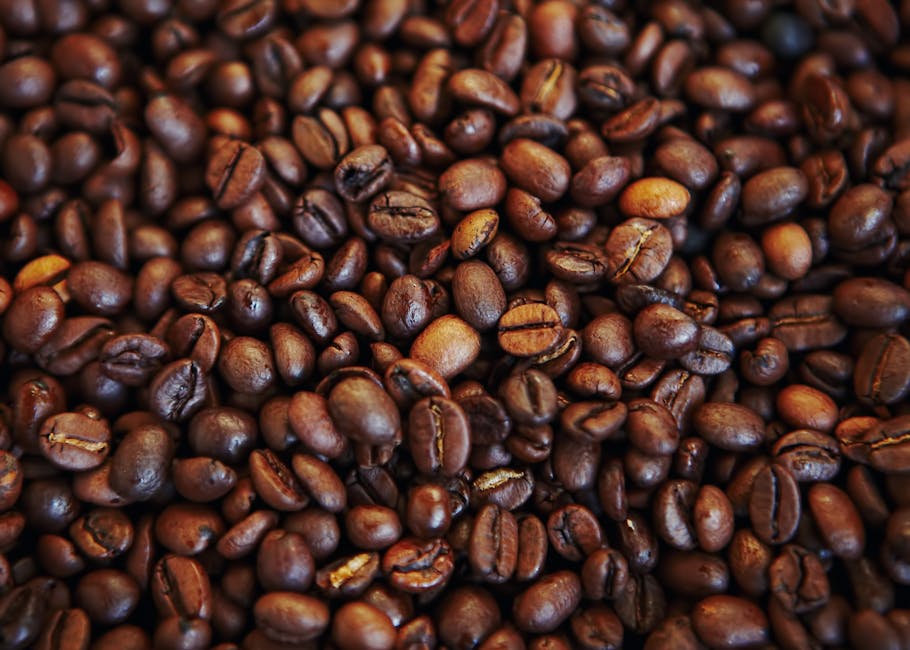Basil, the fragrant king of herbs, has a history as rich and complex as its flavor profile. Originating in the Indian subcontinent, basil’s cultivation spread across Asia and eventually to the Mediterranean, where it became deeply intertwined with culinary traditions. Ancient Greeks and Romans revered basil, associating it with love and remembrance. The word basil itself derives from the Greek word basileus, meaning king, a testament to its regal status in the herb garden. Today, over 150 different varieties of basil exist, each boasting unique aromatic notes and subtle differences in taste, from the classic Genovese to the spicy Thai basil.
The transformation of fresh basil leaves into vibrant, flavorful basil oil is a testament to culinary ingenuity. This simple yet profoundly impactful process allows us to capture and preserve the essence of basil for use throughout the year. While precise historical records of the first basil oil production are scarce, its emergence is undoubtedly linked to the long-standing practice of preserving herbs through oil infusion. This method, dating back centuries, allowed cooks to extend the availability of seasonal ingredients and maintain consistent flavor in their dishes. In many cultures, particularly in Italian cuisine, basil oil is not merely a condiment; it’s an integral component of numerous dishes, adding depth and complexity.
Basil oil’s cultural significance is far-reaching. In Italian cuisine, its association with pesto is undeniable. Pesto, a vibrant green sauce made primarily from basil, garlic, pine nuts, and Parmesan cheese, is a staple throughout Italy and has gained global popularity. Globally, basil oil’s versatility extends beyond pesto. It finds its place in salads, pasta sauces, soups, and as a finishing oil for grilled vegetables and meats. The global basil market is a significant one, with an estimated value exceeding several billion dollars annually, highlighting its widespread use and economic importance. This remarkable growth underscores the continued demand for this versatile herb and its delectable oil derivative. This guide will unveil the secrets to creating the best basil oil, ensuring your culinary creations benefit from this fragrant and flavorful treasure.
Ingredients and Measurements
Creating exceptional basil oil hinges on using high-quality ingredients and precise measurements. The following recipe yields approximately 1 cup of fragrant basil oil, perfect for a variety of culinary applications. Adjust quantities proportionally for larger or smaller batches.
Fresh Basil: You’ll need 2 cups of tightly packed fresh basil leaves. The key here is freshness. Use basil that’s vibrant green, fragrant, and free from blemishes. Avoid using basil that’s wilted, yellowing, or showing signs of decay, as this will significantly impact the final flavor and aroma of your oil. Harvesting your basil just before making the oil is ideal, ensuring peak flavor and freshness.
Extra Virgin Olive Oil: We recommend using 1 ½ cups (355ml) of high-quality extra virgin olive oil. The quality of the olive oil directly affects the quality of the basil oil. A good extra virgin olive oil will have a fruity aroma and a slightly peppery taste. Avoid using refined olive oil, as it lacks the robust flavor profile needed to complement the basil. Look for an olive oil with a relatively neutral flavor that won’t overpower the delicate basil notes.
Salt (Optional): A pinch of sea salt (approximately 1/8 teaspoon) can be added to enhance the flavor and act as a natural preservative. This is optional, but recommended. The salt helps to draw out the moisture from the basil leaves, resulting in a more concentrated flavor. If using, add the salt directly to the basil leaves before adding the olive oil.
Garlic Cloves (Optional): For a more complex flavor profile, you can add 2-3 cloves of garlic, finely minced. This is entirely optional, based on personal preference. If you choose to include garlic, be mindful not to overpower the delicate basil flavor. Adding too much garlic can result in a bitter or overpowering taste in the final product. Remember to remove the garlic before bottling for a purer basil oil if you prefer.
Measurement Precision: Accurate measurements are critical for achieving the desired balance of flavors and consistency. Use a kitchen scale for weighing the basil leaves for the most accurate results. For liquid measurements, employ a liquid measuring cup to ensure the correct amount of olive oil. Consistent measurements are fundamental to replicating the recipe successfully. Slight variations in measurements can significantly affect the final product’s taste and quality.
Ingredient Quality: Remember that the quality of your ingredients directly impacts the final product. Invest in the best quality fresh basil and extra virgin olive oil you can find. Using high-quality ingredients is a cornerstone of creating exceptional basil oil. This simple investment will result in a superior product that will enhance your culinary creations.
Equipment Checklist: Making the Best Basil Oil
Creating high-quality basil oil requires the right tools. This checklist outlines the essential equipment, ensuring a smooth and efficient process from harvesting to bottling. Investing in good quality equipment will not only improve the final product but also enhance your overall experience.
1. Basil Harvesting Tools: Begin with sharp, clean tools to avoid bruising the basil leaves, which can negatively impact the oil’s flavor and aroma. You’ll need:
- Sharp Pruning Shears or Scissors: These allow for precise cutting, minimizing damage to the plant. Choose shears with comfortable handles for extended use.
- Small Basket or Bowl: A shallow, breathable container to gently collect the harvested basil leaves. Avoid crushing the leaves during collection.
2. Oil Processing Equipment: This section focuses on the tools required for extracting the basil essence and creating the oil.
- Food Processor or Blender: A high-powered food processor or blender is crucial for creating a smooth basil puree. A powerful motor ensures efficient processing of the leaves. Aim for a model with at least a 1000-watt motor for optimal results.
- Fine-Mesh Sieve or Cheesecloth: This is essential for separating the pureed basil from the solid matter after blending. A fine-mesh sieve will ensure a smoother, cleaner oil. If using cheesecloth, use multiple layers for best results. You will need approximately 1 square yard (0.84 square meters) of cheesecloth.
- Large Mixing Bowl (at least 2 quarts/ 2 liters): A large bowl is needed to hold the basil puree and the oil during the infusion process. Choose a bowl made of glass or stainless steel to avoid any potential chemical reactions.
- Measuring Cups and Spoons: Accurate measurements are vital for consistent results. Use standard measuring cups and spoons to ensure the correct proportions of basil and oil. You’ll need at least one 1-cup measuring cup and a set of measuring spoons (1 teaspoon, 1 tablespoon).
- High-Quality Extra Virgin Olive Oil (at least 1 cup/240 ml): The choice of oil significantly impacts the final product. Extra virgin olive oil provides a rich base and complements the basil’s flavor. Use a high-quality oil with a mild flavor to avoid overpowering the basil.
3. Bottling and Storage Equipment: Proper storage is essential to preserve the quality and extend the shelf life of your basil oil.
- Sterilized Bottles: Choose dark-colored glass bottles to protect the oil from light degradation. Ensure the bottles are thoroughly cleaned and sterilized before filling to prevent contamination. You will need at least one 8-ounce (240ml) bottle.
- Funnel: A small funnel will make transferring the oil into the bottles easier and cleaner, preventing spills and mess.
- Labels: Clearly label the bottles with the date of production to track freshness. Include any other relevant information, such as ingredients.
Important Note: Always prioritize cleanliness and hygiene throughout the entire process. Wash and sanitize all equipment thoroughly before use to prevent bacterial contamination and maintain the quality of your basil oil.
Preparation of Basil
The quality of your basil oil hinges significantly on the quality of your basil. Choosing the right basil and preparing it correctly are crucial steps. For the best results, use fresh, high-quality basil leaves. Avoid using wilted, yellowed, or damaged leaves, as these will negatively impact the flavor and aroma of your final product.
Quantity: For a batch yielding approximately 250ml of basil oil, you’ll need approximately 100g of fresh basil leaves. This equates to roughly 2 large bunches. However, you can adjust this quantity based on your desired yield and the intensity of basil flavor you prefer. More basil will result in a stronger, more pronounced basil flavor.
Washing and Drying: Thoroughly wash the basil leaves under cool, running water to remove any dirt, debris, or pesticides. Gently agitate the leaves to ensure all surfaces are cleaned. Avoid soaking the leaves for extended periods, as this can lead to wilting and loss of essential oils. After washing, carefully pat the leaves dry using clean paper towels or a salad spinner. Completely dry leaves are essential to prevent water from diluting the oil and promoting bacterial growth.
Removing Stems: Separate the basil leaves from the stems. While some recipes might include stems, for the purest basil oil flavor, it’s recommended to remove them. The stems contain less aromatic compounds and can impart a slightly bitter or grassy note to the oil. Use your fingers or a small pair of kitchen scissors to carefully detach the leaves from the stems. Discard the stems or save them for another use, such as making pesto.
Inspecting the Leaves: Before proceeding, carefully inspect the leaves one last time. Remove any leaves that show signs of damage or discoloration. Only use the freshest, most vibrant leaves for the best flavor and aroma. This meticulous selection process will significantly improve the quality of your final product.
Optional: Chilling the Leaves (for enhanced oil extraction): For potentially improved oil extraction, you can chill the basil leaves in the refrigerator for about 30 minutes before processing. This can help to slightly firm them up and potentially release more essential oils during the infusion process. Although not mandatory, this step can enhance the final product’s quality.
Size Reduction (for improved infusion): While not strictly necessary for all methods, finely chopping or roughly tearing the basil leaves can increase the surface area exposed to the oil, resulting in a more efficient extraction of the basil’s flavor and aromatic compounds. Consider this step if you are using a method that doesn’t involve prolonged simmering or blending.
Following these steps diligently will ensure you have perfectly prepared basil, ready to infuse into your delicious basil oil.
Infusion Process
Creating exceptional basil oil hinges on a meticulous infusion process. This method allows the delicate flavors and aromas of fresh basil to fully permeate the oil, resulting in a vibrant and flavorful product. We’ll be using a simple, yet effective, method that prioritizes quality and avoids harsh heat that can degrade the basil’s delicate compounds.
Begin with the freshest basil you can find. Look for vibrant green leaves with no signs of bruising or wilting. Approximately 2 cups (about 20-25 large leaves) of packed fresh basil leaves are ideal for this recipe. Thoroughly wash the basil leaves under cool running water, ensuring all dirt and debris are removed. Gently pat them dry with a clean kitchen towel; excess moisture can dilute the final product and potentially lead to mold growth.
Choose your oil wisely. Extra virgin olive oil is the preferred choice for its robust flavor profile and high quality. It complements the basil beautifully. For this recipe, you’ll need 1 cup (240ml) of high-quality extra virgin olive oil. Avoid using oils with strong flavors that might overpower the delicate basil taste. Other options include grapeseed oil or avocado oil, but their flavor profiles may alter the final product.
Prepare for infusion. Carefully pack the washed and dried basil leaves into a clean, dry glass jar. A wide-mouth jar makes it easier to pack the leaves and later retrieve the infused oil. Ensure the jar is completely clean and dry to prevent bacterial growth.
Infuse the basil. Slowly pour the extra virgin olive oil over the packed basil leaves, ensuring all leaves are completely submerged. Leave a small headspace at the top of the jar to allow for expansion. Seal the jar tightly with a lid. Place the jar in a cool, dark, and dry place. The infusion process is best conducted at room temperature, avoiding direct sunlight or extreme temperatures. Infuse for at least 2 weeks, shaking the jar gently once a day. This ensures even distribution of flavor and prevents settling. Longer infusion times (up to 4 weeks) will yield a more intensely flavored oil, but monitor for any signs of spoilage (cloudiness, off-odors).
Strain the oil. After the infusion period, strain the basil oil through a fine-mesh sieve lined with cheesecloth or a coffee filter. This will remove all the basil leaves and ensure a clear, smooth oil. Gently press the leaves against the cheesecloth to extract as much oil as possible. Discard the used basil leaves.
Store the oil properly. Transfer the strained basil oil into a clean, sterilized glass bottle, making sure to seal it tightly. Store the oil in a cool, dark place. Proper storage will significantly extend its shelf life. Refrigeration is recommended for optimal flavor and longevity. Basil oil, even when properly stored, should be used within 3-6 months for the best flavor.
Important Note: Always follow good hygiene practices throughout this process to prevent bacterial contamination. If you notice any signs of spoilage such as mold growth, cloudiness, or an off-putting odor, discard the oil immediately.
Filtering and Storage
Once your basil infusion has steeped, the crucial step of filtering is essential for achieving a high-quality, clear basil oil. Improper filtering can leave unwanted sediment in your oil, impacting both its appearance and shelf life. We recommend a multi-stage approach for optimal results.
Stage 1: Coarse Filtering. Begin by straining the oil through a fine-mesh sieve lined with a cheesecloth. This initial step removes larger basil leaves and debris. Place the sieve over a large bowl and gently pour the infused oil through. Use a spatula to press down gently on the solids in the cheesecloth to extract as much oil as possible. Dispose of the solids responsibly.
Stage 2: Fine Filtering. For a truly crystal-clear basil oil, fine filtering is necessary. You have several options here. The simplest is using a coffee filter. Fold a standard coffee filter in half, then in half again, creating a cone. Place this cone in a funnel positioned over a clean, dry container (preferably a glass bottle with a tight-fitting lid). Slowly pour the oil through the coffee filter. This will remove finer particles and improve the oil’s clarity.
Alternatively, you can use filter paper designed for scientific or laboratory use. This type of filter paper offers superior filtration and will yield the clearest oil. Follow the manufacturer’s instructions for folding and using the filter paper. If using filter paper, ensure the paper is compatible with oils and will not leach any chemicals into your product.
Stage 3: Optional Polishing (for exceptionally clear oil). For truly professional-grade clarity, consider a final polishing step. This involves using a very fine filter, such as a 0.22-micron filter (available from scientific supply companies). This removes even the tiniest particles, resulting in an exceptionally clear and brilliant oil. This step is optional but highly recommended for commercial or high-end applications.
Storage is critical for maintaining the quality and extending the shelf life of your basil oil. Proper storage will prevent oxidation and rancidity. Always store your basil oil in a clean, dark-colored glass bottle. Amber or dark green glass is ideal, as it protects the oil from light, which can degrade its quality and flavor. Fill the bottle completely to minimize air exposure.
Keep the bottle tightly sealed and store it in a cool, dark, and dry place. Ideally, the storage temperature should be below 70°F (21°C). Avoid storing the oil in direct sunlight or near heat sources. Under optimal storage conditions, your basil oil should have a shelf life of approximately 6-12 months. Always check for any signs of spoilage before using, such as a change in color, odor, or texture. If you notice any off-putting changes, discard the oil immediately.
By following these filtering and storage recommendations, you can ensure your homemade basil oil maintains its vibrant green color, fresh aroma, and delicious flavor for as long as possible.
Quality Control and Taste Test
Creating exceptional basil oil hinges not only on the initial production but also on rigorous quality control and thorough taste testing. This crucial final stage ensures your oil meets the highest standards of flavor and safety.
Visual Inspection: Begin by visually inspecting the finished basil oil. It should be a vibrant, deep green color, reflecting the freshness of the basil used. Cloudiness or sediment indicate potential issues. If you notice any significant cloudiness or particles, gently filter the oil through a fine-mesh sieve lined with cheesecloth. This removes any small basil pieces that may have passed through the initial straining process. The oil should be clear and translucent, not murky or opaque. A slight haze is acceptable, but excessive cloudiness suggests improper filtering or potential spoilage.
Aroma Check: The aroma is a critical indicator of quality. Your basil oil should possess a strong, fresh, and unmistakably basil scent. A muted or weak aroma suggests either insufficient basil usage or potential degradation. A rancid or off-putting odor indicates spoilage and the oil should be discarded immediately. Compare the aroma to fresh basil leaves; the intensity should be comparable, though concentrated.
Taste Test: The final and most important step is the taste test. Use a clean spoon to take a small amount (approximately 1 teaspoon) of the oil. Do not ingest a large quantity at once, as even high-quality oils can be quite potent. Swirl the oil in your mouth, allowing it to coat your tongue and palate. Note the intensity of the basil flavor. It should be vibrant and herbaceous, with a balanced sweetness and slight peppery notes. Any bitterness, sourness, or other off-flavors indicate a problem. Off-flavors could result from using old or damaged basil, insufficient straining, or improper storage.
Quantifiable Measurements: While subjective, you can establish benchmarks for your oil. For example, if you used 1 cup of packed basil leaves and 1 cup of extra virgin olive oil, your yield should be approximately 3/4 to 7/8 cup of basil oil after straining. A significantly lower yield might indicate excessive loss during the straining process, suggesting the need for refinement in your technique. Keep detailed records of your ingredients and yield for each batch to help you refine your process over time.
Storage and Shelf Life: Proper storage is crucial for maintaining the quality of your basil oil. Store the oil in a clean, dark-colored glass bottle in a cool, dark, and dry place. Avoid direct sunlight, which can degrade the oil’s quality and flavor. Properly stored, your basil oil should maintain its quality and flavor for approximately 2-3 weeks in the refrigerator and up to 6 months if frozen in ice cube trays (allowing for easy portioning). Always check for any signs of spoilage before use, even if within the expected shelf life.
By following these quality control and taste test procedures, you’ll ensure that your homemade basil oil not only meets but surpasses expectations, becoming a culinary treasure you’ll be proud to use.
Recommendations for the Best Basil Oil
To truly elevate your culinary creations with homemade basil oil, consider these recommendations for optimal flavor and longevity. Start with the freshest basil you can find; the quality of your ingredients directly impacts the final product. Look for vibrant green leaves with no signs of wilting or yellowing. Harvesting your own basil is ideal, but high-quality grocery store basil will also work well.
Experiment with different types of basil to discover your personal preference. While Genovese basil is a classic choice, you can also explore lemon basil for a citrusy twist, or Thai basil for a more pungent, anise-like flavor. The subtle variations in flavor will significantly impact the overall taste of your oil. Remember to adjust the amount of garlic and salt accordingly depending on the basil variety you use. A sweeter basil may require slightly more garlic for balance.
Regarding storage, proper technique is crucial. Store your basil oil in a clean, dry, airtight glass container, away from direct sunlight and heat. These conditions can cause the oil to become rancid and lose its vibrant green color and fresh basil flavor. Refrigeration is generally recommended for optimal freshness, extending its shelf life to approximately two to three weeks. Avoid storing it in plastic containers, as this can affect the taste and aroma.
Serving suggestions are plentiful. Drizzle your homemade basil oil over pasta dishes, pizzas, soups, and salads. It adds a fresh, herbaceous note to grilled vegetables, roasted meats, and even seafood. A simple bruschetta topped with fresh tomatoes and a generous drizzle of basil oil is a classic and delightful appetizer. Consider using it as a marinade for chicken or fish, allowing the flavors to infuse for enhanced taste and aroma.
Complementary dishes abound. The peppery, slightly sweet basil flavor pairs well with tomatoes, garlic, mozzarella cheese, and lemon. It works wonders in Mediterranean-inspired cuisine, adding depth and complexity to dishes such as Caprese salad, pesto pasta, and minestrone soup. Experiment with adding it to sauces, dips, and spreads for an extra layer of flavor. The possibilities are endless!
Nutritional Information (per tablespoon, approximate values): The nutritional content of basil oil will primarily depend on the type and amount of oil used as a base. Assuming a tablespoon of extra virgin olive oil as the base, with roughly 1 teaspoon of packed fresh basil, the calorie count would be approximately 120 calories. Fat would constitute the majority of the calories, with minimal amounts of carbohydrates and protein. Basil itself is a good source of Vitamin K and antioxidants.
Important Note: While this recipe provides a delicious and healthy addition to your cooking, remember that the shelf life is limited. Always inspect the oil before using it, discarding if it exhibits any signs of rancidity (off odor or cloudy appearance). Enjoy responsibly!





